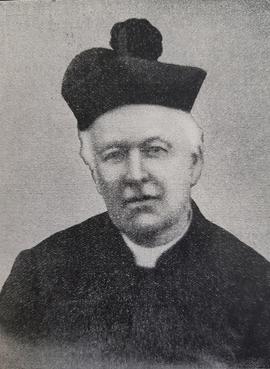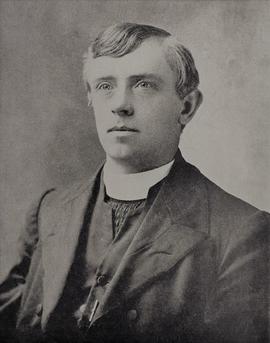- DANC
- Person
- 1858-1952
He was born in Kilmichael in County Cork, Ireland on 14 July 1858. After graduating at St Patrick's College, Maynooth, Cohalan was ordained a priest at the Cathedral of St Mary and St Anne, Cork on 25 July 1882. His first pastoral appointment was a curate at Kilbrittain, County Cork from October 1883 to January 1884. He briefly resumed his post-graduate studies at St Finbarr's Seminary (now College), Cork from January to November 1884. His second curacy was at Tracton, County Cork from November 1884 to September 1896. Cohalan returned to St. Patrick's College, Maynooth as a professor of Theology from 7 September 1896 to 7 June 1914.
He was appointed Auxiliary Bishop of Cork and Titular Bishop of Vaga on 25 May 1914. Cohalan was consecrated bishop at St Mary and St Anne's Cathedral on 7 June 1914 by John Harty, Archbishop of Cashel-Emly. Two years later, he was appointed Diocesan Bishop of Cork on 29 August 1916.
Cohalan was an outspoken critic during the Irish War of Independence, condemning acts of violence on both sides. In particular, he denounced the policy of reprisals. In July 1920, he pronounced an interdict on the killers of an RIC sergeant, shot dead in the church porch in Bandon. He declared that anyone killing from ambush would be excommunicated. On 12 December 1920, Cohalan, issued a decree saying that "anyone within the diocese of Cork who organises or takes part in ambushes or murder or attempted murder shall be excommunicated". In turn, his life was threatened by the IRA. In August 1928, he condemned the British government which had allowed Terence McSwiney to die on hunger-strike in 1920.
He died in office at Bon Secours Hospital, Cork on 24 August 1952, aged 94 years old.
Originally buried at St Finbarr's College, Farranferris, he was reinterred in the grounds of St Mary and St Anne's Cathedral, Cork in 1996.
His nephew of the same name, Daniel Cohalan, was Bishop of Waterford and Lismore from 1943 to 1965.









